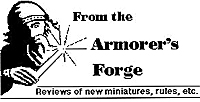
Brigade Castings' first model in their line of 1:600 scale ACW ships is an ironclad the doesn't get much attention. The USS Keokuk was launched Dec. 6, 1862, and even though she had a short career, she is an interesting vessel.
The USS Keokuk was designed by Charles W. Whitney and constructed at J.S. Underhill Dry Dock and Iron Works in New York City. She was an experimental design, incorporating a unique armor layout -horizontal layers of iron bars and timber. She was also designed with a ram, but evidently didn't receive it before she went into action.
The USS Keokuk served with Admiral Du Pont's North Atlantic Blockading Squadron. Along with eight other Union Iron ships, it attacked Fort Sumter on April 7, 1863. The Union squadron took a pounding, but none worse than the LISS Keokuk. She came within several hundred yards of Fort Sumter, where she was hit some 90 times, 19 of which penetrated below the waterline. The Confederates were in the habit of skipping large caliber solid shot across the water and thus striking the hull. The USS Keokuk was able to retire a short distance to Morris Island where she foundered the next day. She was abandoned and a Confederate salvage crew landed the 11" Dalgrens from her gun towers. She was considered a failure in design, but I wonder if any ship could withstand 90 hits in any better shape. The gun tower concept was a drawback that turrets had the answer to.
The USS Keokuk Specs
- 677 Tons (Burden Tonnage)
159'6" overall length
36'beam
8'6" draft
Two screws, and two horizontal direct-acting condensing engines producing nine knots.
92 crewmen
Two 11 " Dalgren Smoothbores, one each in two gun towers protected by 4.5" iron shudders.
4" iron plating on the main part of the towers.
Brigade Castings has chosen this unique vessel to start off their line of ACW ships. First, the hull is resin and cast in one piece. The detail is very good, the plating shows up nicely, and there is no flash to file. The fittings are made of metal tubing and include the rifle shield for the rear tower and the stack in two pieces (one fits inside the other). Ingenious, and it looks right as well. The instruction sheet is laid out fairly well. It includes stats, a brief history, recommended list of building materials, model preparation and painting tips. The diagram is simple and easy to follow.
However, I would point out three of the four poles (piano wire), are labeled "flagpoles." The one on the stern is the flagpole, while the one on the bow is an anchor davit and the one just behind the front tower is a light pole. The fourth they labeled correctly as the galley stack. The sizes are listed for the lengths of these pieces of wire and they do matter.
Assembling this ship was almost effortless. The parts fit nicely and the holes were drilled to the correct depth. Painting the ship was painless, as well. The one thing I would suggest that they might include in the future is a flag. The scale of the ship appears to be right in line with 1:600 as well.
All in all, a great first ship to start off their line. I also met the designers while actually using this ship in a "Smoke on the Water" game at Cold Wars'98. By the way, I have used the ship in at least three games now. and it has survived each time. Brigade Castings has a Cairo class river ironclad in the works. 1, for one, can't wait to see it!
Brigade Castings' address is 34337 Richard, Wayne, MI 48184-2428. I bought the ship from the Colour Sergeant (see "Down at the Hobby Store"). At $6, it is well worth the investment. Hopefully additions to the line are forthcoming.
Back to The Herald 26 Table of Contents
Back to The Herald List of Issues
Back to MagWeb Master Magazine List
© Copyright 1999 by HMGS-GL.
This article appears in MagWeb (Magazine Web) on the Internet World Wide Web. Other military history articles and gaming articles are available at http://www.magweb.com